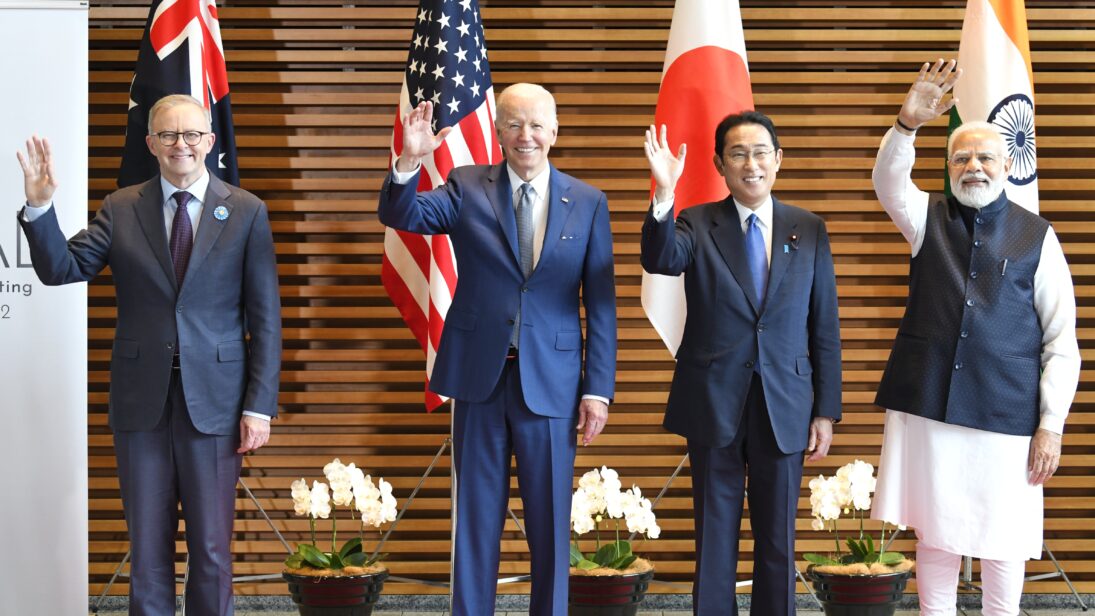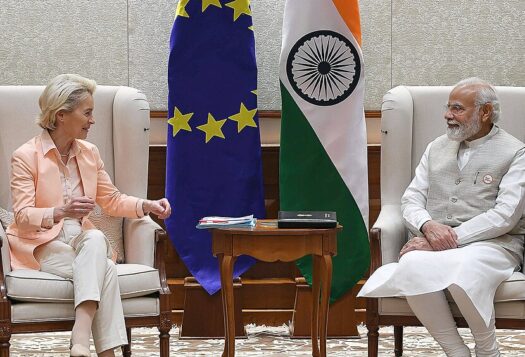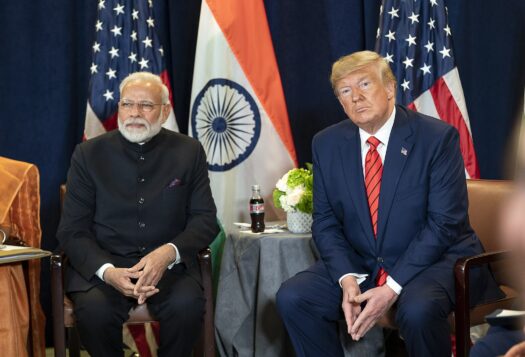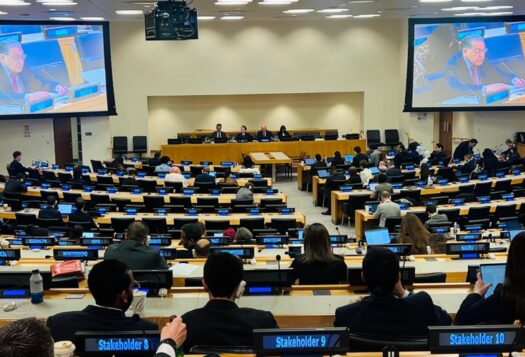
From May 20th to 24th, U.S. President Joe Biden embarked on his maiden trip to Asia. In South Korea, Biden emphasized the need for greater supply chain connectivity and security in the Indo-Pacific with ROK President Yoon Suk-Yeol. In Japan Biden and Prime Minister Kishida Fumio discussed the U.S.-Japan defense and strategic alliance in the Indo-Pacific region. Subsequently, President Biden and his Japanese counterpart were joined by India’s Prime Minister Narendra Modi and the newly elected Australian Prime Minister Anthony Albanese for the second in-person Quad Summit in Tokyo. Finally, Biden concluded his trip by launching the IPEF, a novel economic framework that offers new cooperation opportunities among states of the Indo-Pacific region. All these efforts appear to be aimed at strengthening strategic partnerships while reassuring the U.S. allies in the Indo-Pacific of its commitment to the region.
While largely successful in affirming commitments to the region, it remains to be seen whether one of the most notable takeaways of the visit—the inauguration of the IPEF—will gain traction. The framework promises greater economic cooperation and has the potential to reflect the shifting economic and strategic priorities of the United States and 12 initial IPEF countries. However, despite some early promises, several issues within the initiative pose serious challenges to its success: it is not an institution, it leaves out several important states in the region, and it is comprised of states with varying degrees of development.
Strengthening Partnerships: Biden’s Indo-Pacific Policy in Action
During the Trump administration, protectionist policies with near-sighted objectives of the United States made many emerging powers of the Indo-Pacific doubt the U.S. commitment to the region. These policies, which went into full drive during the Trump administration, have also caused challenges for the Biden administration that in turn have made the creation of a robust economic framework difficult. On the other hand, since February 2022, U.S. foreign policy has been mainly focused on managing the Ukraine crisis, giving rise to concerns among strategic analysts and policymakers that China might take advantage of a distracted America to increase its assertive actions in the Indo-Pacific. Therefore, the Biden administration is working, at bilateral and multilateral levels, to convince its allies and partners in the region of the U.S. “determination to strengthen its long-term position in and commitment to the Indo-Pacific.”
The second in-person summit of the Quad, which was held during Biden’s Japan visit, aimed at forging agreements that make the Indo-Pacific more “resilient” for upcoming economic and political shocks that may arise due to geopolitical challenges both in Europe and in the South China Sea. As China’s assertiveness expands—making the country more confident and aggressive in its dealings with the United States and its allies and partners in the Indo-Pacific—the Quad emphasizes that major stakeholders of the region are willing to oppose any “coercive, provocative or unilateral actions that seek to change the status-quo…”
The IPEF is a response-in-the-making for the supply chain bottlenecks that the world faced during the COVID-19 pandemic.
Built on four pillars involving a connected, resilient, clean, and fair economy the IPEF also aims to enforce U.S. commitments to the region while advancing economic “resilience, sustainability, and inclusivity.” The framework is one of the most concrete steps of reassuring U.S. commitment to the region and building economic cooperation. However, while the framework seems promising, there are several structural challenges to address for it to move forward with its designed intentions.
Indo-Pacific Economic Framework for Prosperity: Deliverables and Challenges
With 12 initial partners along with the United States, the IPEF aims to decide the “rules of the road.” The intent behind the creation of the IPEF is simple. The full economic scope and potential of the Indo-Pacific region are untapped, luring the United States to expand and determine the rules of economic gameplay in the region.
The IPEF is a response-in-the-making for the supply chain bottlenecks that the world faced during the COVID-19 pandemic. As the pandemic showed, extreme reliance on one nation for facilitating the movement of essential raw materials and equipment can hurt key industries. Through its focus on supply chain resiliency, the suggested aim of the framework appears to be and economic supply chain network parallel to that of China in the Indo-Pacific region; in case a heightened competition or contestation between China and the United States threatens to disrupt global supply chains. This might be a challenge as most economies in the region including the major stakeholders in the Indo-Pacific that are more reliant on the Chinese supply chain network.
The agreement has also been marketed in part for U.S. domestic audiences. The official U.S. brief on the IPEF launched emphasized the ways the framework benefits the American “families and workers.” To garner more support and to be reflective of its claim: “prosperity and security for all nations of the Indo-Pacific,” the IPEF will also need to be portrayed by the United States and understood as a framework assisting each member state. By using the ‘American Worker’ analogy, the United States may warrant an unnecessary backlash from the domestic governments of each of the member states. Thereby threatening to put the framework under a technical limbo.

Furthermore, the United States wishes to maintain high standards in all its economic and communication plans, this has always been an issue for nations such as India. However, while India is an IPEF partner, it is still considering its position and capacity for involvement with the grouping. It is essential to ensure that the IPEF doesn’t meet the same fate as the Regional Comprehensive Economic Partnership (RCEP) did with India. The reason why India refused to be part of the RCEP was a fear among Indian industrialists that the partnership would result in a flow of imports from China that would contribute to a greater trade deficit between India and China with more policies benefiting the latter. While China is not in the IPEF and there are important differences between the two, the United States and India still need to ensure that their approach toward negotiating India’s role and duties in the framework are reflective of the economic and strategic needs of not just the United States but also of India and other states.
Another contention is the fact that the framework is in its nascent stage and is not an economic institution. While the informal nature of the IPEF might make it more flexible and adaptive, it cannot ensure that the negotiated rules and principles will be binding. In addition, whereas the framework encourages the creation of resilient supply chain networks to strengthen cooperation among states of the Indo-Pacific, it is incomplete without the inclusion of other members of the Indo-Pacific, namely, Taiwan. As a member of Asia-Pacific region; stability in Taiwan strait and peace in Taiwan has the likeness of a linchpin in the geopolitics of the region. The exclusion of Taiwan from IPEF leaves a gap in the economic framework on the role of Taiwan as a pivotal economy of the Indo-Pacific. The inclusion of Fiji does expand the scope of the grouping; however, creating an Indo-Pacific supply chain network is difficult if the Taiwan is not represented to deliberate on economic processes that are to take place in its nearby seas and straits.
As the United States works to lead the terms of engagement in the negotiations, it will also need to ensure that the IPEF is representative of the varied economic and strategic interests of nations of the Indo-Pacific.
Finally, the framework may also face difficulties given the differing levels of economic development and strategic priorities of each state in the Indo-Pacific. Many emerging economies of the Indo-Pacific require economic stability and financial assistance from major powers such as China. Any shift in the economic dynamics of the region therefore needs to be mindful of the transitional tremors it might create for emerging economies of the Indo-Pacific region.
Moving Ahead
While the IPEF promotes greater economic cooperation between states of the Indo-Pacific region, there are several challenges that the initiative faces. The informal nature of the framework, its exclusion of some important states of the region, and the member states’ varying levels of development are some of the core obstacles to actualizing the goals of the framework.
Considering India and other emerging stakeholders of the Indo-Pacific region, the United States will need to recognize the varying levels of economic and strategic development with different negotiating styles and tactics among states in the Indo-Pacific. In India’s case, the nation’s negotiating outlook is dominated by the pressures it faces on its borders and its need to be autonomous in dealing with those issues. In operationalizing the framework, the United States will need to be conscious of India’s concerns about forsaking its autonomy—either economically and strategically. As the United States works to lead the terms of engagement in the negotiations, it will also need to ensure that the IPEF is representative of the varied economic and strategic interests of nations of the Indo-Pacific. This saves the framework from developing into a myopic agenda supportive of only a ‘Western-led economic framework’ in the region.
***
Image 1: Ministry of External Affairs, India via Flickr
Image 2: Nicolas Datiche – Pool/Getty Images


